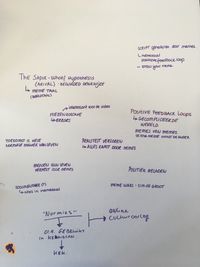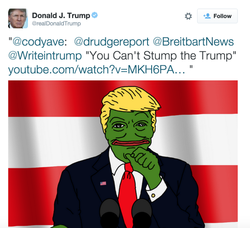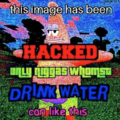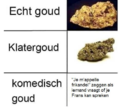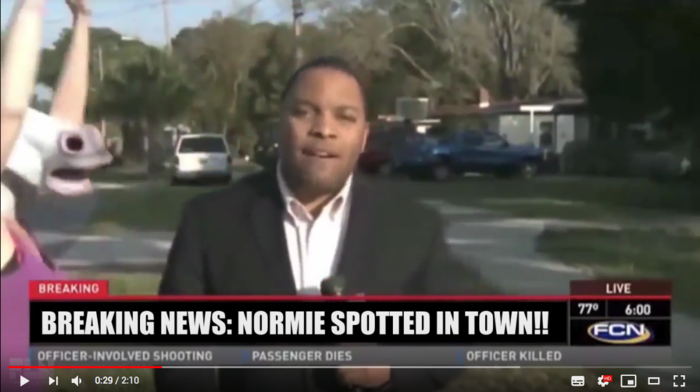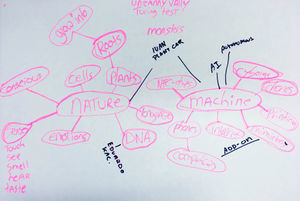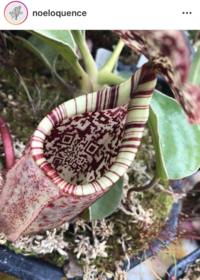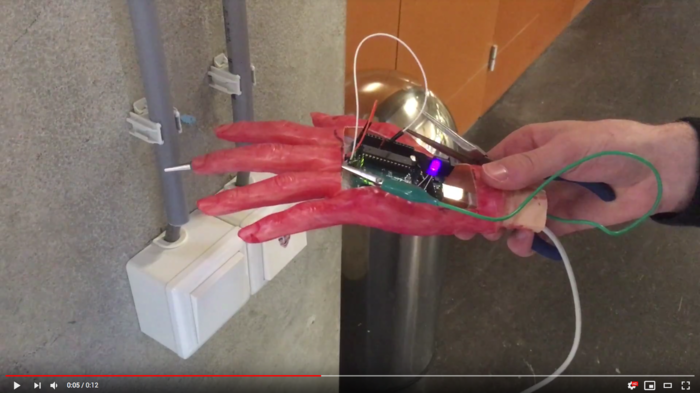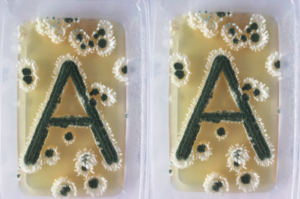User:Ricotta
R
I
C
A
R
D
O  A
B
B
A
S
Z
A
D
E
H
A
B
B
A
S
Z
A
D
E
H
Cybernetics: Working with self-organizing systems
Critical Making
'Reimagine an existing technology or platform using the provided sets of cards.
'With our group, we simply chose which combination of cards most suited our interests. Thus we ended up with Memes in a dystopian future, realised by video.
This was a collaboration with: Laura Ketting, Jorijn de Jonge and Eva Schoren.
Research
After agreeing on the subject, we immediately began writing down collective knowledge and ideas. How does this fit in the feedback loop as discussed in class? We also started a shared Google Drive document to collect all our found information.
It soon became clear that Memes are not only mere jokes floating around the internet, but they also carry heavy political value. We also discovered that the politically charged messages had to be transfered by language, thus Meme culture has a language on its own.
With these findings in mind, we started to further research and develop our project.
Findings / references
Meme culture
- The Meme Wars by Kim de Groot or rather Mona Lisa's is a good example of someone who researches the relationship between Meme culture and folklores. Watch the footage of the Meme Wars video here<<
- Pepe the Frog is a classic meme icon, and it is used in countless Meme's. However, since Donald Trump used this Meme (see image on the right), Pepe the Frog became a political symbol of the right-wing society. It also became the mascot of Kekistan, a fantasy world which is part of a strange sub-culture. This interesting (Dutch) documentary about Kekistan can be found here<<
- This is certainly not the first time where presidents get intermigled with Memes. This is a little (joke) example of a Barack Obama Meme.
- Memes often get merged with other Memes, and carry a different value with their origin and references. Origin of the name Kek.
Language of Meme culture
- Just like our languages, Meme culture language changes over time. When we master a language, it changes the way we think, just as Lera Boroditsky explains in this Ted Talk.
- This occurrence is also known as the Sapir-Whorf Hypothesis. The Sapir Whorf hypothesis states that the specific language we speak influences the way we think about reality. It is also used in Sci-Fi such as the movie Arrival (2016).
To conclude
When we compared Meme culture and language, we came to to the conclusion that there is not much difference between these two matters. We were deeply interested in the seriousness of something which appears funny. While we got deeper into researching Meme culture, we found a lot of images, which were beyond our understanding; this clearly reveals the linguistic part of this subject. Examples of Meme feedback loop and found Memes beyond our understanding below:
Result / video
We were inspired by Sunspring's Sci-Fi short video. The creators of this video made a machine learning script for their project. As quoted from the link: "...They created "Jetson" and fueled him with hundreds of sci-fi TV and movie scripts..." and "...they gave themselves 48 hours to shoot and edit whatever Jetson decided to write.". This also had something to do with language. What if this script will all of the sudden make sense in the future? With this hypothesis in mind, we made our own hypothesis.
Our video is based on real Memes found on the internet. Just by how memes merge, we merged memes to fit the script. Hypothesis: "What if meme culture takes over and meme language would be understood by everyone?".
Below is a preview image, Click here for the video
Cybernetic Prosthetics: The Sixth Sense project
"A new relationships between a biological organism- and a machine, relating to our explorations on reimagining technology in the posthuman age." With this assignment we were building working prototype which "simulate interactive feedback loops that generate emergent forms." Due to common interests/ambitions, I teamed up with Tim van Hooft and Jorijn de Jonge.
Research
Since writing down ideas and common interests really worked in the previous project, we started doing this first. Many ideas came to mind out of excitement, so it was a struggle to narrow our ideas down to one subject.
We again, started a shared Google Drive document to collect all our found information.
Findings / references
Human and technology
At first we desperately wanted to do something with plants and nature, but why? What is the benefit of this? how can we realise this in less than two weeks.
- The Cactus Project by Laura Cinti made us very excited. We found it such a remarkable idea that the usage of technology could merge genes of plant and human.
- The Next Nature Net is also very iconic concerning nature and technology. The modular body drew our attention.
- What happens when art, nature and technology meet head-on? This is a small collaboration video of a project done.
We still could not figure out what we wanted with the project, so we decided to take a step back, and rather look at the things which make us excited.
To have a 'sixth sense' fitted our interests and context of the assignment more, so we decided to build on from this point. How interesting could it be to sense something which we can't now? How we have 5 natural senses and the ability to add a sense would create a new merge between tech and nature.
- Richard Vijgens project called White Spots really suited our project while we thought of our future perspectives and the constant expanding of The internet of things around us.
Process of prototype
We decided to create an extension of our hands, that would be able to show on touch that you are near an electro magnetic field.
We found a tutorial on how to create an easy EMF detector from Aaron Alai. With just the use of an external battery, LED light, resistor and piece of current lead wire.
Code and practicalities
The LED light goes in digital input 11 and Ground
The current lead wire is attachted to Analog output 1 and attached to a 1M resistor stated in analog output 5.
We used this code for the Arduino Software: // Aaron ALAI EMF Detector April 22nd 2009 VERSION 1.0 // aaronalai1@gmail.com // *future note, put in averaging function to average val which should result in a more // smooth response from the led. I will give you a hint on how to make an averaging function; // it involves the use of an array
int inPin = 5; // analog 5
int val = 0; // where to store info from analog 5
int pin11 = 11; // output of red led
void setup() {
Serial.begin(9600);
}
void loop() {
val = analogRead(inPin); // reads in the values from analog 5 and
//assigns them to val
if(val >= 1){
val = constrain(val, 1, 100); // mess with these values
val = map(val, 1, 100, 1, 255); // to change the response distance of the device
analogWrite(pin11, val); // *note also messing with the resistor should change
// the sensitivity
}else{ // analogWrite(pin11, val); just tuns on the led with
// the intensity of the variable val
analogWrite(pin11, 0); // the else statement is just telling the microcontroller
// to turn off the light if there is no EMF detected
}
Serial.println(val); // use output to aid in calibrating
}
You can use a variety of materials to use as an EMF antenna, all with different sensitivities and possibilities.
We also used a variety of different materials but found that a simple alligator clip attached to the resistor works best and finds a good balance between the sensitivities.
Finalizing prototype
With a simple Halloween-store hand, we managed to sketch the idea of having a sixth sense. What if we took this years in the future? will it be in our hands? or will it serve as an extra limb somewhere else on our bodies?
Result / video
In the end, we were surprised by the result, and very happy that it actually worked.
Below is a preview image, Click here for the video/demonstration
Final project: MOLDAPP
About/general
My fascinations in mold/fungus started with my Graphic Design major project, which was researching the material: mold.
This project was all about doing research and reflect upon my findings while working further on the 'outcome'. The most important part of this project was that I were able to allow myself to see these micro-organisms from different perspectives. My major resulted in growing typography from mold (image on the right), and to cherish the generative side of micro-organisms. This was a mere feasible or literal sense on growing mold, and with the potential to eventually digitalize or made into image vectors for example.
But with the mold project at Digital Craft, it contained rather a conceptual value. By doing research simultaniously next to experimenting, I was able to keep making sense on my own project.
